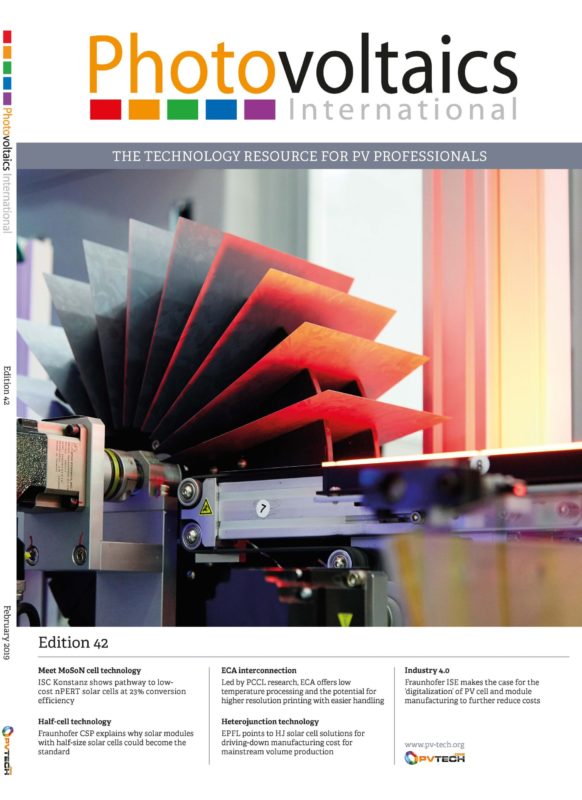By S. Saravanan, RenewSys India Pvt Ltd, Hyderabad, India; Ch.S.R. Suresh, RenewSys India Pvt Ltd, Hyderabad, India; V.V. Subraveti, RenewSys India Pvt Ltd, Hyderabad, India; K.C. Kumar, RenewSys India Pvt Ltd, Hyderabad, India; U.K. Jayaram, RenewSys India Pvt Ltd, Hyderabad, India
The silicon PV industry has predominantly used silicon wafers sliced by a steel wire, with silicon carbide particles (slurry wire – SW) as an abrasive and polyethylene glycol as a coolant. Low yield, high total thickness variation (TTV), significant material waste and short wire lifetime (and thus high downtime) of SW cutting technology have prompted the wafer slicing industry to develop an alternative technology. Researchers have developed diamond wire (DW) cutting technology for slicing the silicon and demonstrated that it overcomes the drawbacks of SW cutting technology. Although the DW cutting technology has been demonstrated for slicing wafers, the wafer surface is different after the conventional acidic texturing in a silicon solar cell process. It is therefore important to improve the existing process or to develop a new process, in order to produce a homogeneous texturization on DW-cut wafers. In this work, a systematic approach has been pursued to improve the existing process by using an additional etchant (a texture additive) in the acidic mixture. Different etch depths and the corresponding mean reflectance were studied. Optical and morphological studies on DW-cut wafers processed with and without a texture additive have been carried out and interpreted in terms of electrical performance.


